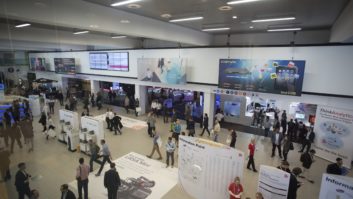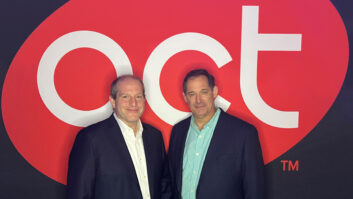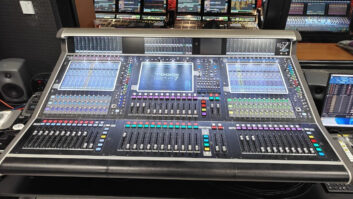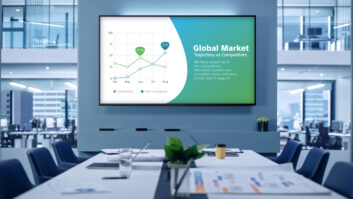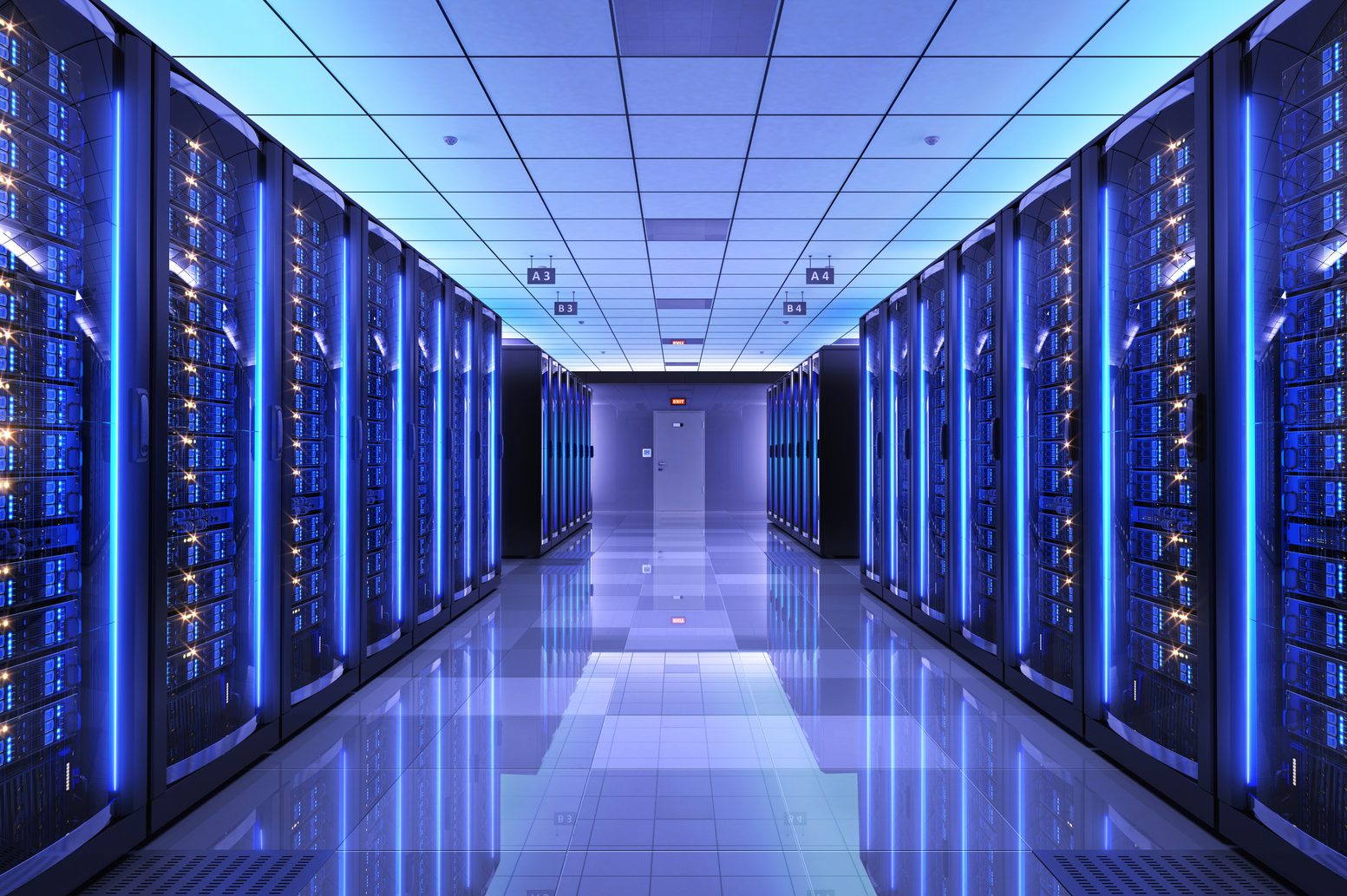
QSC has prompted discussions regarding the evolution of DSP technology by demonstrating how its Q-SYS software can run on standard IT hardware. Is the rest of the industry likely to follow suit, and what will be the implications?
In the run-up to ISE, QSC announced that the company’s Q-SYS software could be decoupled from its proprietary hardware and migrated to a scalable, standards-based IT platform, in this case off-the-shelf Dell servers. The announcement was followed up at ISE with an industry-first demonstration with fourth-generation Q-SYS software on a standard high performance Dell EMC PowerEdge R730 server.
While certainly significant, this revelation is the manifestation of a specific aspect of AV-IT convergence that has been percolating through the industry for some time: manufacturers moving away from proprietary hardware to software running on standard IT hardware. That said, the move looks set to have far-reaching consequences for DSP technology and the pro AV world as a whole.
QSC believes the move makes sense, particularly for larger installations utilising data centre processing, and that the rest of the industry will follow suit, though the precise timescale is up for debate.
“QSC is excited to be the first manufacturer in the industry to introduce a solution where audio, video and control (AVC) processing can now live on standard IT hardware,” says TJ Adams, QSC’s director of installed systems product management. “For QSC, we realised nearly 10 years ago there wasn’t a ton of value to building proprietary processing hardware. I emphasise processing because we do believe there is value in building AV I/O hardware endpoints, because of the special applications that only AV manufacturers really have expertise in building.
“For us, we saw a lot of value in taking advantage of an already established, powerful generic processing platform that offered capabilities well beyond AV-specific processing. All of which came at a lower price point with development typically faster than most proprietary offerings.”
Challenges
Karl Christmas, senior product specialist, Yamaha Pro Audio, agrees that the move is a logical one. “Adapting audio and control software to run on a central server using standard hardware is effectively a natural step in the evolution of the audio software industry,” he says.
However he raises a number of questions: “One of the major potential disadvantages is that, if there is a problem with the system, does the end-user contact the manufacturer of the server or that of the software? Will the two manufacturers collaborate closely enough so that any service outages are minimised? What happens when the server or software manufacturer wants to update its product?”
Richard Bugg, Meyer Sound digital products solutions architect, agrees with the premise. “For audio signal processing, once the conversion to digital has been done, there is nothing unique about the hardware needed to do many of the signal processing or automation functions.”
He too has some words of warning: “The benefit of using a third-party manufactured general-purpose computer [equipment ?] comes with a cost and risk, though. Mass-produced products often get into a race to the bottom, and if you are dependent on a feature or function that is not key to the off-the-shelf device, you can easily find yourself in a shorter lifecycle for your product as you have to redesign to accommodate changes made outside of your control or influence.
“The other challenge is with quality and reliability. In high-end professional applications, reliability is critical. You may be able to tolerate a short outage of a computer in an office application, but to lose even 15 seconds of audio at a concert or live event can be a disaster.”
Trent Wagner, senior product manager at Symetrix, points out that there is a significant development burden entailed in changing platforms . “Companies with a large amount of intellectual property dependent upon application-specific chipsets will have to migrate to, or start fresh with, Intel standard platforms,” he says.
Biamp executive VP, Graeme Harrison, adds: “There is the obvious task of porting algorithms to a different hardware platform (x86 or ARM processors, analogue devices, or Texas Instruments’ DSPs), followed by the ever-important latency issues between the processors and the chosen OS layer.”
“One of the main challenges for our industry is shifting our mindset from how we’ve always done things,” says Adams. “Our industry has many legacy purpose-built ‘box’ solutions based around proprietary processing schemes. These have to be supported and maintained by those manufacturers, as their primary products are already built around this older technology and have significant momentum. Porting all that rich knowledge and implementing their technology into developing processing solutions targeted toward off-the-shelf generic processing will likely prove to be a difficult transition; but I believe it will happen.”
Adoption timescale
The AV industry as a whole doesn’t always embrace new ideas and fundamental change easily. However, the expectation is that this kind of system will become the norm over the next few years – though the timeline is hard to predict.
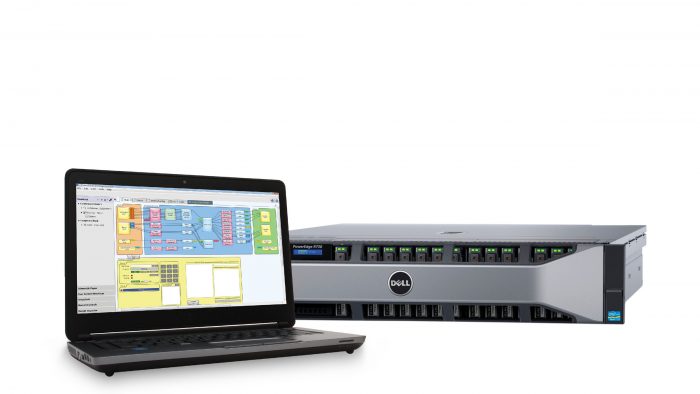
“As we gain more market adoption in the coming years, there will be more pressure for other manufacturers to develop their own flavour of off-the-shelf processing,” states Adams. “It won’t be overnight, but it will not take too many years either.” Meyer Sound’s Bugg predicts a timescale of one to three years. It should be pointed out that QSC is yet to announce a product, but the company is looking at a release date near the end of the year.
Wagner suggests: “In the next few years, we’ll see higher-end and larger-scale systems become even more converged with respect to AVC technologies and they will likely be handled by larger and more centralised servers instead of being divided among multiple dedicated AVC processors across many racks. It’s the I/O points that will be distributed and made more simple. It may take several more years for the shift to trickle down to smaller systems.”
Business models
It remains to be seen the effect this approach will have on business models, but Adams proffers: “We believe we will still see the older ways persist for years – selling hardware and software together as a whole product – a DSP, control or video box. However, eventually there will be progressive end-customers, consultants and integrators that will want to push the envelope even further and request to license software only; targeting their own provided IT hardware as well as coming up with new ways that they want to work with us as a vendor.”
“Business models will be profoundly affected in the end,” comments Harrison. “What QSC showed doesn’t require any changes as you are still buying a box from an audio manufacturer, but the logical extension of this is buying generic hardware from a PC manufacturer and software from an audio manufacturer, with the emphasis on buying the software – something our industry has been resolutely opposed to up until now.”
Wagner predicts: “It will definitely affect every department at the manufacturer’s level, but in a simple way; it’s just a change in who sources certain pieces of hardware and from where.
“Until every device in a system is network-enabled and utilising the same protocols, there will still be a need for hardware; an endpoint, on/off ramp, or node to get AVC signals in and out of the system, or simply on and off the network. Whether that I/O hardware is a simple widget-type adapter, wall panel, or large format rack-mount device, it will likely become very simple, specific, and commoditised – potentially to the point of being non-system or non-manufacturer specific.”
www.biamp.com
www.meyersound.com
www.qsc.com
www.symetrix.com
www.yamahaproaudio.com
